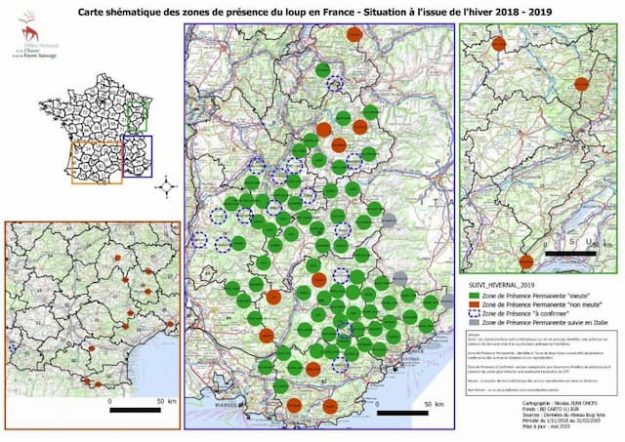ONCFS published Friday the report of winter monitoring 2018-2019 of the population of wolves in France. They can now “resist the risk of extinction”.
With now 530 adults, the wolf population has increased significantly in one year, exceeding the threshold of 500 to “resist the risk of extinction”, which will lead to an increase in the number of animals that can be slaughtered.
The wolf plan adopted in 2018, denounced by the breeders and the defenders of the environment, provided that the “threshold of demographic viability” fixed at 500, which represents the aptitude of a population in the medium term (100 years) “to resist the risk of extinction “, would not be reached until 2023.
But according to the winter report of the National Office of Hunting and Wildlife (ONCFS) published Friday 7th June 2019, “the number of winter exit is estimated at 530” against 430 a year earlier.
Densification of the alpine arc
From field measurements, necessarily partial, and a mathematical model, the estimate is, in fact, an interval of 479 to 578, leading to this average estimate of 530.
In population, population growth is “essentially by densification” in the alpine arc, but this protected species has also colonized new territories. Wolves were detected in 2018 in the Pyrénées-Atlantiques, in the Aube-Yonne area, and new areas of the Massif Central.
These carnivores, eradicated in the 1930s and naturally returned to Italy in the 1990s, are concentrated in the Alps, the Southeast and the East.

12,500 animals victims of attacks
The increasingly important presence of the predator is resisted by the breeders who denounce the attacks against their herds.
In 2018, 3674 attacks were made against more than 12,500 animals, mainly sheep.
A map published Friday by ONCFS shows that these attacks are mainly concentrated in the Alpes (Alpes-Maritimes, Alpes-de-Haute-Provence, Savoy), and some homes on the border between the Vosges and Meurthe-and- Moselle and in the south of Aveyron.




